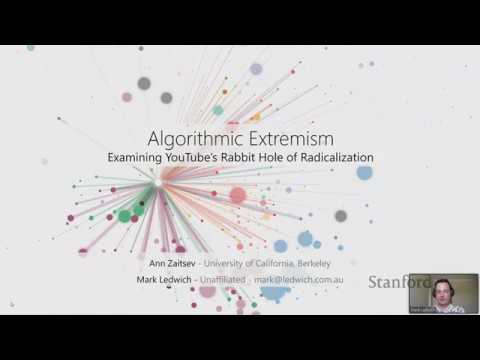Description:
Explore a Stanford seminar examining YouTube's recommendation algorithm and its alleged role in political radicalization. Delve into a data-driven analysis of 768 US political channels and 23 million recommendations collected over two months in late 2019. Discover how the algorithm favors mainstream media and cable news content over independent channels, with a bias towards partisan political outlets. Learn about the methodology, data collection process, and visualization techniques used to analyze recommendation patterns. Investigate the algorithm's impact on content exposure, including its treatment of fringe content, personalization effects, and comparisons with other platforms like Facebook. Gain insights into the inner workings of YouTube's recommendation system and its implications for online political discourse and information dissemination.

Stanford Seminar - Algorithmic Extremism- Examining YouTube's Rabbit Hole of Radicalization
Add to list
#Data Science
#Data Collection
#Mathematics
#Statistics & Probability
#Social Sciences
#Political Science
#Radicalization
#Computer Science
#High Performance Computing
#Parallel Computing
#Parallelization